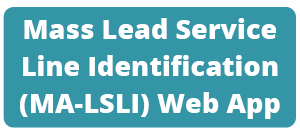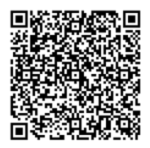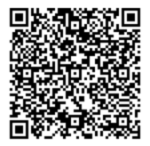Lead and Copper Rule (LCR) Program
 Attention: Water Customers Connected to the Town’s Water Supply
Attention: Water Customers Connected to the Town’s Water Supply
Pursuant to the EPA’s forthcoming Lead and Copper Rule Revision, the Town of Westminster is required to develop a Service Line inventory and wants to assist its customers to identify and remove all lead service lines.
Federal LCRR Requirements and Implementation Timeline
The Lead and Copper Rule Revisions (LCRR) are only partially going into effect in 2024, with many remaining parts expected to be changed. Two things will be required under the LCRR:
1.) Every Community and NTNC system is going to need to have a complete inventory of all service connections served; and
2.) systems with at least one lead service line, one galvanized line requiring replacement, or any unknown material lines must generate a service line replacement plan. These are due no later than October 16, 2024. With your help, we hope to complete this requirement well before the deadline. This applies ONLY to water recipients who are connected to the Town’s water supply.
 The following questions will help us identify and record data. Mass Lead Service Line Identification (MA-LSLI) Web App (smartsheet.com)
The following questions will help us identify and record data. Mass Lead Service Line Identification (MA-LSLI) Web App (smartsheet.com)
Do you know if you have a lead service line connecting the water distribution line in the street to your home?
If you do not know or are uncertain if you have a lead service line, take the following two steps:
Step 1: Identification
 Use EPA’s Protect Your Tap: A Quick Check for Lead (https://www.epa.gov/ground-water-and-drinking-water/protect-your-tap-quick-check-lead-0 or scan the QR code to the left) to help you determine if your service line is made of lead. This guide uses pictures and step-by-step directions to identify lead service lines and provides resources to learn more. Within the guide, choose Municipal Water and go to the section: “Find Your Water Line/Service Line.”
Use EPA’s Protect Your Tap: A Quick Check for Lead (https://www.epa.gov/ground-water-and-drinking-water/protect-your-tap-quick-check-lead-0 or scan the QR code to the left) to help you determine if your service line is made of lead. This guide uses pictures and step-by-step directions to identify lead service lines and provides resources to learn more. Within the guide, choose Municipal Water and go to the section: “Find Your Water Line/Service Line.”
Step 2: Snap a Picture of Your Service Line and Upload
 Use the MassDEP sponsored -web application for consumers, the Mass Lead Service Line Identification (MA-LSLI) Web App (https://app.smartsheet.com/b/form/f9ee39b7972f443ca63e8b936cd7f92b or scan the QR code to the left). The app may be accessed on your mobile device or any computer online. Please note, you do not need to download anything to your mobile device or computer. All you need to do is take a photo, upload it to the ‘app’ website and answer a few basic questions, such as name and address). EPA’s Protect Your Tap: A Quick Check for Lead Guide document will help you know where to take the photo.
Use the MassDEP sponsored -web application for consumers, the Mass Lead Service Line Identification (MA-LSLI) Web App (https://app.smartsheet.com/b/form/f9ee39b7972f443ca63e8b936cd7f92b or scan the QR code to the left). The app may be accessed on your mobile device or any computer online. Please note, you do not need to download anything to your mobile device or computer. All you need to do is take a photo, upload it to the ‘app’ website and answer a few basic questions, such as name and address). EPA’s Protect Your Tap: A Quick Check for Lead Guide document will help you know where to take the photo.
What Will Our Department do With Your Submission?
The Town will be distributing a mailing with information on the EPA's Lead & Copper Rule Revision, and requests that residents participate in identifying their water service line material type. The letter provides instructions on how to visually identify the water service line material at the point where it enters the building, typically just upstream of the water meter. Once we receive your submission, we will take the following actions: contact you, confirm your service line material and provide you with information on how to replace the service line, if it is lead.
We look forward to your interest and participation in this program. Thank you for your important input for safe drinking water!
Testing
In 2021, Westminster’s 90th percentile was 2 parts per billion (PPB) for lead and 0.211 parts per million (PPM) for copper. The regulations require that 90% of samples taken have lead levels below 15 PPB and copper levels below 1.3 PPM. If samples collected exceeded these action levels, public notification would happen in a timely manner and corrective actions would be taken immediately to remedy the situation.
| Lead and Copper | Date Collected | 90th Percentile | Action Level (AL) | MCLG | # of Sites Sampled | # of Sites above AL | Exceeds AL (Y/N) | Possible Sources |
|---|---|---|---|---|---|---|---|---|
| Lead (ppb) | 2021 | 2 | 15 | 0 | 20 | 0 | N | Corrosion of household plumbing systems; Erosion of natural deposits |
| Copper (ppm) | 2021 | 0.211 | 1.3 | 1.3 | 20 | 0 | N | Corrosion of household plumbing systems; Erosion of natural deposits; Leaching from wood preservatives |
What You Should Know About Lead
The Westminster Water Department is responsible for providing high quality drinking water, but cannot control the variety of materials used in plumbing components. Lead can get into tap water through the service line that connects your home to the water main if it is made of lead. Lead may also come from lead solder used to connect pipes in home plumbing, and from some faucets and fixtures.
When lead is present in water, it is typically due to the water flowing through service lines or internal pipes or plumbing in buildings with lead pipes or plumbing with lead solder or brass. Exposure to lead in drinking water can cause serious health effects in all age groups. Infants and children can have decreases in IQ and attention span. Lead exposure can lead to new learning and behavior problems or exacerbate existing learning and behavior problems. The children of women who are exposed to lead before or during pregnancy can have increased risk of these adverse health effects Adults can have increased risks of heart disease, high blood pressure, kidney or nervous system problems. Because lead may pose serious health risks, both the EPA and the Centers for Disease Control and Prevention (CDC) agree that “there is no known safe level of lead in a child’s blood” . If you think you have a lead service line and want to reduce your exposure to lead you should do the following:
- Use only cold, fresh water for drinking, cooking, and preparing baby formula. Run the water for at least 1 minute or until after it turns cold.
- Do not boil the water to remove lead.
- Check whether your home has a lead service line. IF YOU DO, HAVE IT REMOVED.
- For more information, see https://www.mass.gov/lead-in-drinking-water
Essential Facts
- The major sources of elevated lead levels in drinking water are lead-based solder used to join copper pipes, faucets and other fixtures made of brass and chrome-plated brass, and in some cases, pipes made of lead within a home or that connect a home to the water main (service lines).
- In 1986, pipe solder containing greater than 0.2% lead was banned for residential plumbing purposes. At the same time, Congress put restrictions on the lead content of faucets, pipes, and other plumbing materials.
- If you suspect elevated lead levels from your drinking water, testing can be conducted to determine if lead levels are safe. Please call 978-874-5572 for more information.
- The following actions can help reduce possible exposure to lead from your drinking water:
- Flush your cold water tap for several minutes, or until the water is noticeably colder, prior to drinking or cooking with your tap water. This brings in fresh water from the distribution system that has not been exposed to your internal plumbing for an extended period of time (this is important, as -most sources of lead are typically found in your home plumbing system). Better yet, collect a gallon of water once you’ve flushed your pipes and store it in your refrigerator for future use.
- Replace older fixtures in your home that may contain elevated levels of lead. Do not use your hot water tap to collect water for drinking or cooking with. This is because metals, like lead and copper, dissolve into hot water faster than cold water from your household plumbing.
- Replace lead service lines if present.
Resources
MassDEP
- MassDEP/DWP’s February 11, 2022, letter for initial overview: https://www.mass.gov/doc/getting-ready-for-the-lead-and-copper-rule-revisions-lead-service-line-inventories/download
- https://www.mass.gov/doc/getting-ready-for-the-lead-and-copper-rule-revisions-lead-service-line-inventories
- https://www.mass.gov/doc/lcrr-lead-service-line-inventories-an-infographic/
- SRF Financing: https://www.mass.gov/info-details/lead-service-line-planning-program
EPA
- EPA’s “Protect Your Tap: A Quick Check for Lead” https://www.epa.gov/ground-water-and-drinkingwater/protect-your-tap-quick-check-lead
Other
- Lead Service Line Replacement Collaborative: https://www.lslr-collaborative.org/
